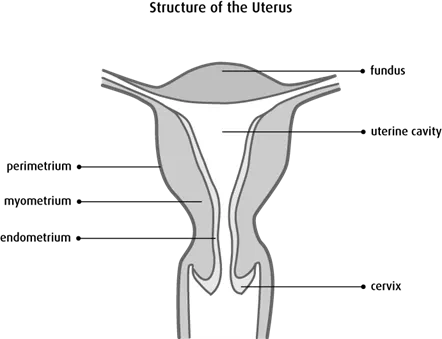Uterine fibroids are growths in the uterus that are benign in nature. This means that they are not cancerous, but can cause other health related problems if they become too big or grow in dangerous areas.
They are medically called Leiomyoma.
It is estimated that about 70% of white women and 80% of black women will have Fibroids by the age of 50. African descendants are also at higher risk of having complications from fibroids according to current data.
No Direct cause for this is known
Good thing about them is that they do not cause any symptoms for majority of people unless they grow in sensitive area.
Let’s first understand layers of the uterus before going to types and causes of fibroids.
Uterus Anatomy.
The human uterus is made up of three main layers of different tissues that perform different function.
- Perimetrium: this is the fibrous tissue that serve as the outer covering of the uterus, reducing friction between uterus and
- Myometrium: this is the muscular layer of the uterus, it is the one that becomes enlarged and contracts during child birth to push the baby out through the birth canal. This is also where most fibroids originate
- Endometrium: the inner most layer of the uterus, it is where the implantation of fertilized egg occurs and menstrual bleeding occurs when this layer sheds.

Some cells in the Myometrium divide continuously forming a mass with irregular shape that has no blood supply and not cancerous. This tissue ball is called fibroids.
It may grow and become big enough to protrude out of the muscular tissue or may remain microscopic (not visible to the naked eye). You may have multiple fibroids in different locations with different sizes.
Fibroids usually enlarge during reproductive years and become smaller after menopause. This is because they are sensitive to hormone estrogen, which become lower after menopause.
Common locations of fibroids
Fibroids can grow in different places and are called with different names based on where they grow.
- Subserosal fibroids: these are fibroids that grow and protrude to the outer covering of the womb (uterus)
- Intramural fibroids: grow within the muscles of the uterus
- Submucosal fibroids: these are fibroids that protrude into the uterus, they are less common compared to the above mentioned types.
Causes and Risk factors
There is no single cause of fibroids, but there are many factors that are linked to development of fibroids. These are:
- Hormones: being in reproductive age is a risk factor on its own since estrogen causes enlargement of the fibroids.
- Genetics: as mentioned earlier, you are more likely to develop fibroids if you are black or if there is a family member with fibroids.
- Obesity: Being Overweight or having obesity is another risk factor
Signs that you Might be Having Fibroids
Fibroids normally do not cause any symptoms. They are usually found incidentally during normal pelvic exam or ultrasound done for other reasons.
There are some people whom the fibroids become symptomatic, especially if they grow too large or compress sensitive structures.
You may experience the following symptoms:
- Menorrhagia : heavy menstrual flow
- Infertility
- Chronic lower back pain
- Frequent urination which may be mistaken with bladder infection
- Spotting: bleeding in-between periods
Treatment options for fibroids
For fibroids that do not cause symptoms, there is no need for treatment.
For those who have complicated fibroids, the best treatment is surgical removal.
A single fibroid may be removed or sometimes the doctors may decide to remove the whole uterus.
Bottom line
If you are diagnosed with fibroids, there is no need to panic or be scared of cancer. You should think about their removal only if they cause symptoms mentioned above.
You should also remember that the symptoms may not be caused by fibroids but by other medical conditions.